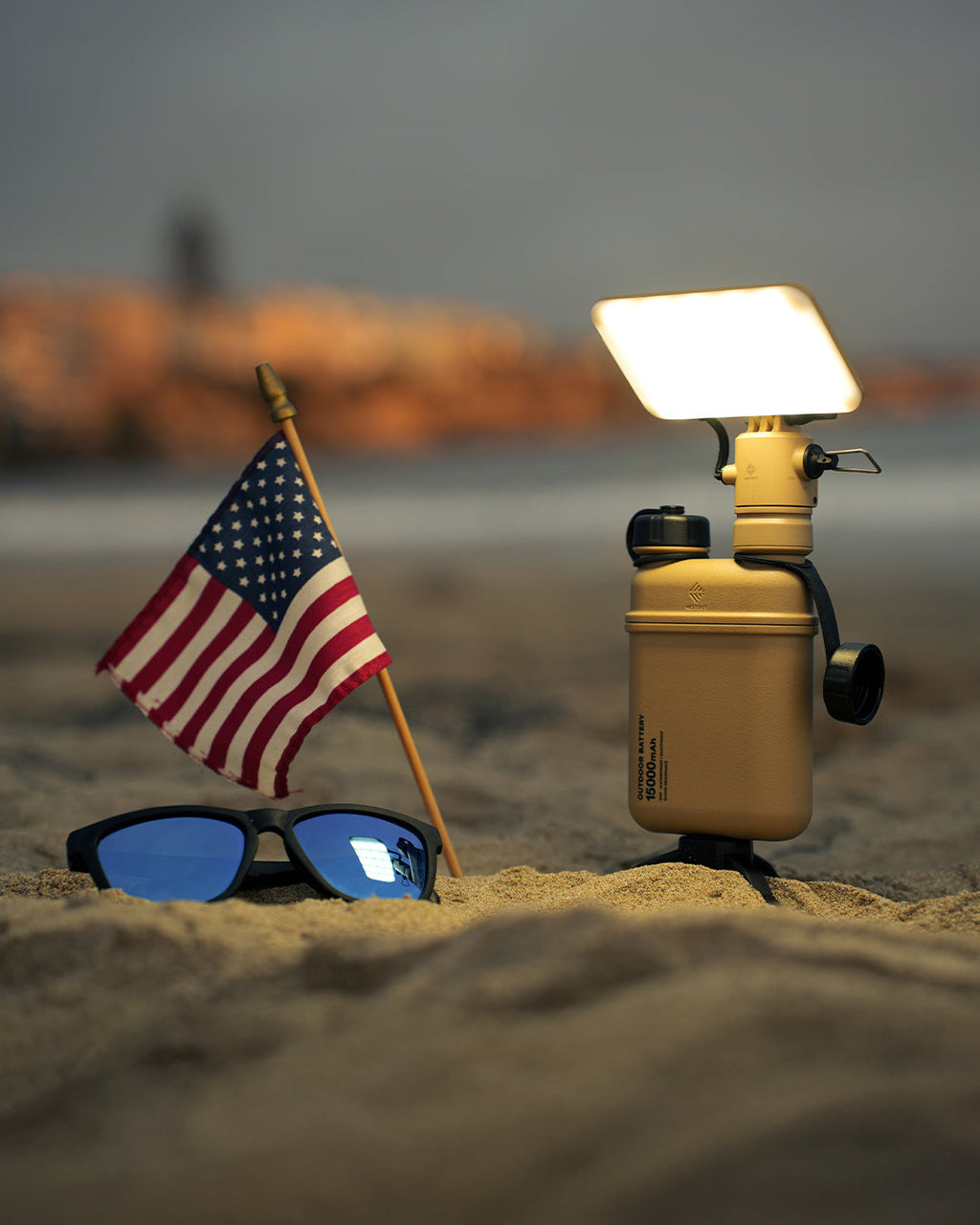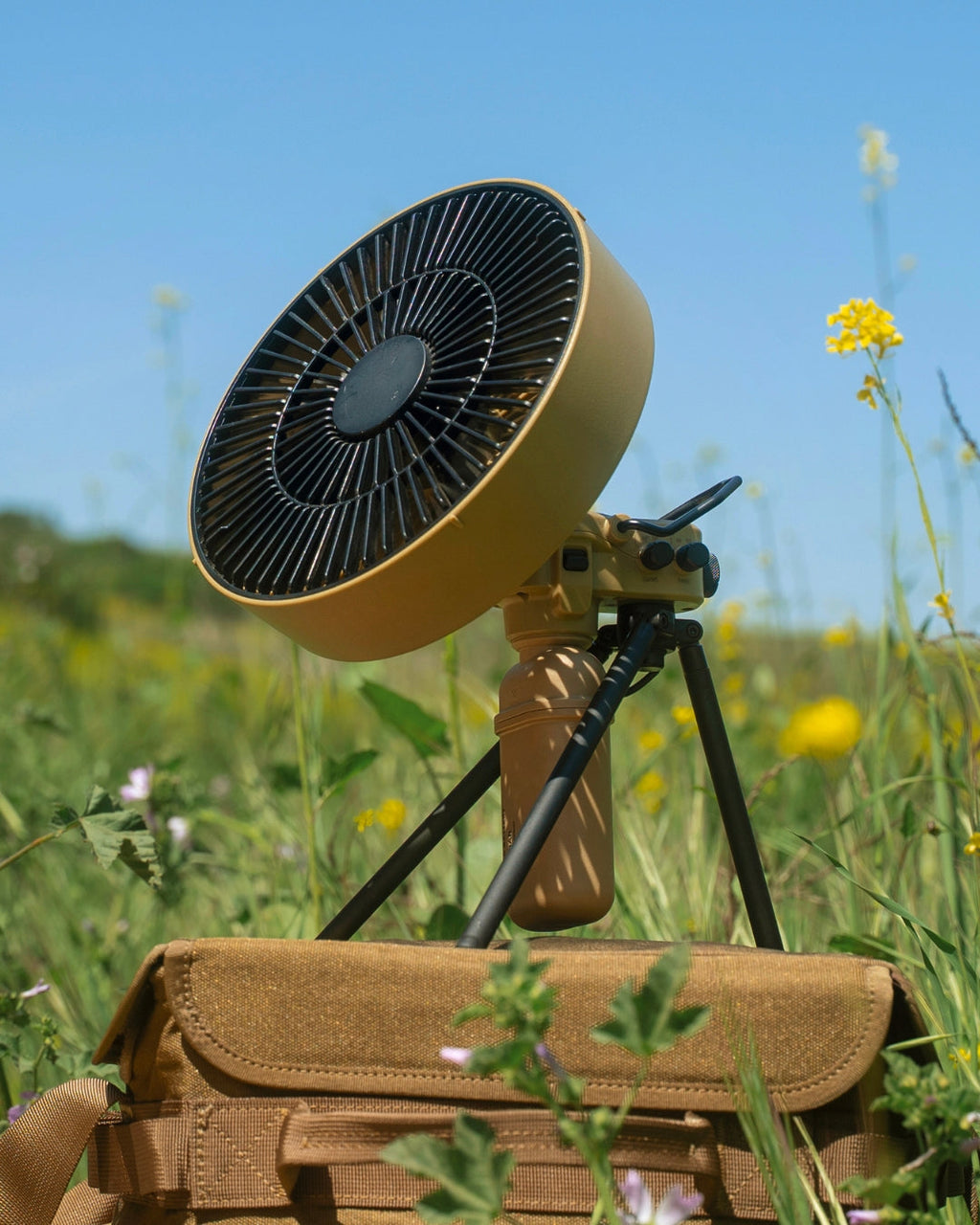Water Resistant vs Waterproof: What’s the Difference?
When you're miles from the nearest outlet and storm clouds are building on the horizon, knowing the difference between water-resistant and waterproof gear can mean the difference between staying on track—or getting stranded.
While both offer protection, the key is understanding how much and what kind of water exposure your gear can handle. At NESTOUT, we design rugged tech with the outdoors in mind. Whether you're dodging drizzle in the Cascades or wading through a downpour on a coastal trek, here’s what you need to know about choosing the right water protection!

Water Resistant: Your First Line of Defense
Water-resistant gear repels water to a certain degree—think drizzles, splashes, and light rain. It’s not built for total immersion, but it’ll shrug off the occasional shower if you're caught on a trail.
Look for IP ratings like IPX4, which indicate basic splash protection from any direction. For example:
-
NESTOUT’s Outdoor Portable Batteries feature rugged housings with water-resistant seals that can handle light rain.
-
Our solar chargers are built with outdoor-ready coatings that shed light moisture during charging.
This is the kind of protection you want when:
-
You’re navigating foggy ridgelines
-
You leave your battery clipped to a pack during light rain
-
You need a lightweight power option for variable but mild weather
Yes, NESTOUT batteries can operate during a drizzle. Just keep the ports sealed when not in use, and wipe off excess moisture before plugging anything in.
Waterproof: Built for Total Submersion
Waterproof gear takes things to the next level. It can withstand full water exposure, often up to 1 meter of submersion for 30 minutes or more.
Look for ratings like:
-
IPX7 – Submersible in shallow water temporarily
-
IP67 – Fully dust-tight and water submersible
NESTOUT’s 3-in-1 Whistle Light and Lamp-1 attachment come with IP67 ratings, which means they’ll keep glowing through driving rain or even brief submersion—ideal for stormy treks, wet campsites, and marine use.
This is the kind of gear you pack when:
-
You’re on a multi-day trek with guaranteed rain
-
You’ll be crossing rivers or kayaking
-
You can’t afford failure, no matter how wet the conditions get

IP Waterproof Ratings
Here’s a breakdown of common Ingress Protection (IP) codes you’ll see on gear:
| IP Rating | Water Protection | Example Use Case |
|---|---|---|
| IPX4 | Splash-proof from any direction | Light rain, morning dew |
| IPX5 | Jets of water (e.g., hose) | Wet campsite setups |
| IPX7 | Submersion up to 1m for 30 minutes | Heavy rain, water crossings |
| IP67 | Full dust protection + water submersion | Rugged expeditions, marine environments |
Most NESTOUT batteries and chargers are IPX4 rated for splash resistance, while modular light attachments like the Lamp-1 and Flash-1 reach IP67 for total environmental defense!
Which Is Best for Your Gear?
Here’s a quick way to decide what level of water protection you need:
-
Urban day hikes, short trips, or fair weather: Water-resistant is fine. Choose compact batteries and solar chargers.
-
Long backcountry treks, coastal adventures, military ops: Waterproof gear is essential. Prioritize IP67-rated lighting and protective power housing.
-
Mixed-use or variable climates: Combine both. Use a water-resistant battery and add a modular waterproof lamp attachment to expand function as needed.
You don’t always need fully waterproof gear...but if failure isn’t an option, go beyond the basics!
Waterproof vs Water Resistant FAQs
How do I dry gear safely after water submersion?
Gently shake out water, wipe with a soft cloth, and let items air-dry fully with ports or covers open. Avoid using heat sources.
Is water-resistant gear able to be out in the rain?
Yes—for light to moderate rain. Just make sure ports are sealed and the gear is stored away if conditions worsen.
Can water-resistant gear be fully submerged?
No. Water-resistant gear is not designed for full immersion. Submerging it may cause permanent damage or corrosion.
Are NESTOUT’s power banks waterproof?
NESTOUT power banks are water-resistant (IPX4)—they can handle splashes and light rain, but not full submersion while in use (without a cap). With cap screwed tightly on however, you may submerge the power bank.
Can I safely charge devices with a NESTOUT battery while it’s drizzling?
Yes—as long as the port covers are dry before opening, and water doesn’t get into the USB ports. For added safety, charge under cover.
Are NESTOUT products able to withstand a week-long trek where rain is likely every day?
Absolutely. Pair our water-resistant power banks with IP67-rated light attachments and solar chargers for all-weather confidence.
Does continual dropping decrease the water-resistant efficacy?
Over time, impacts can degrade seals and housing. Always inspect gear after drops, and replace if any cracks or deformities appear.
Understanding the difference between waterproof and water-resistant gear empowers you to plan smarter and pack lighter. With modular power and lighting solutions from NESTOUT, you're ready to face rain, mist, splash, or storm—without missing a beat.






Leave a comment
All comments are moderated before being published.